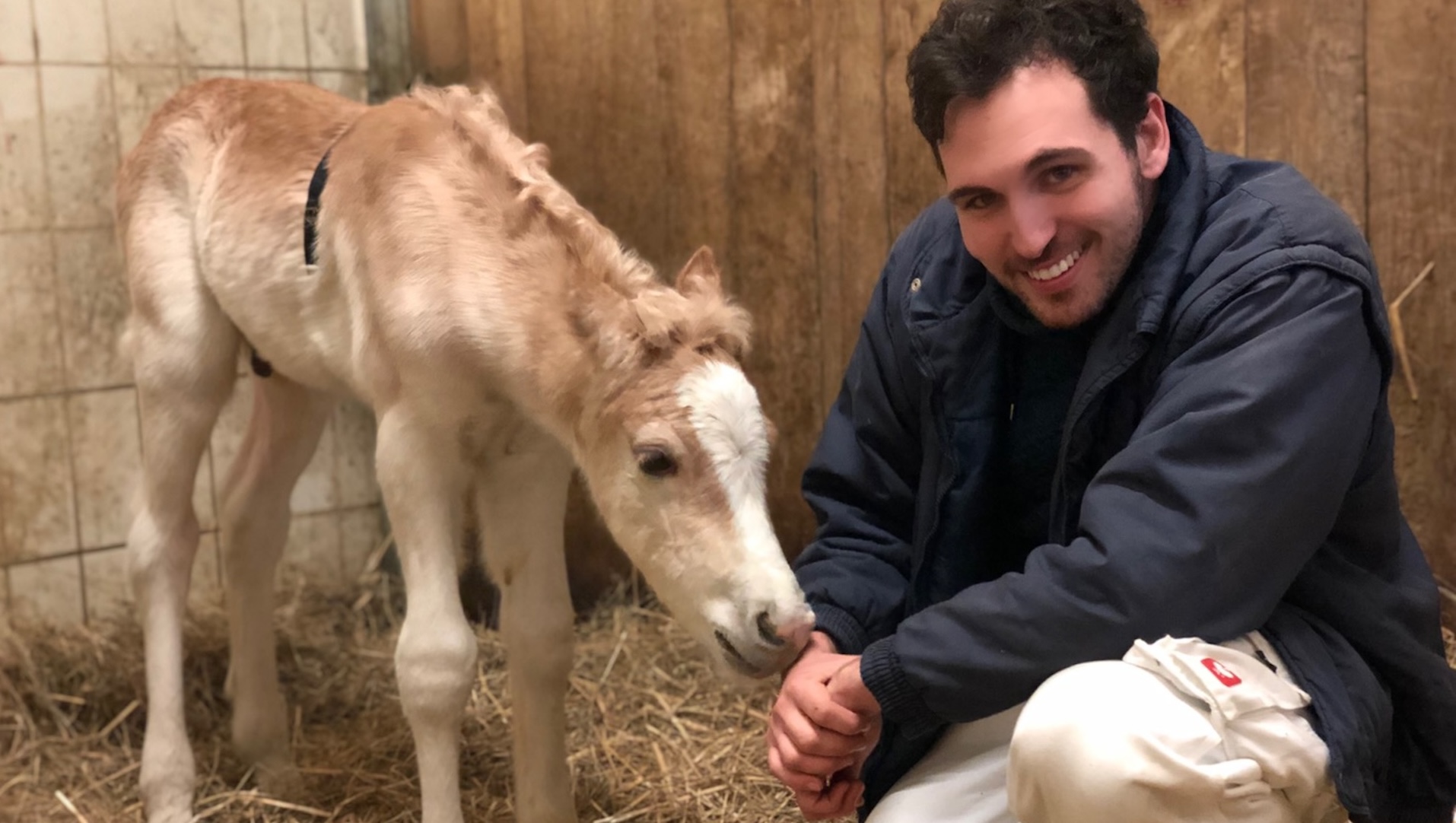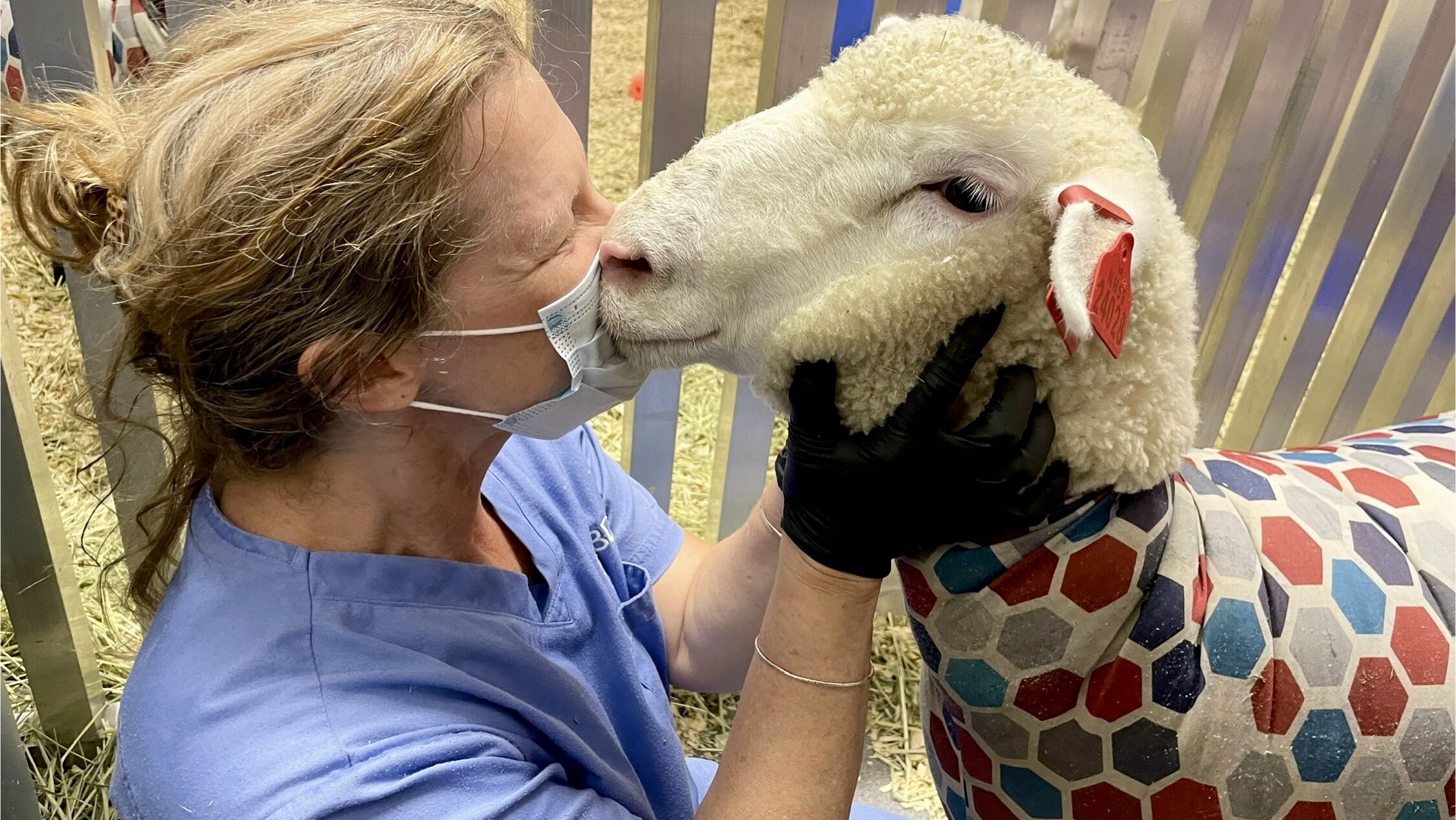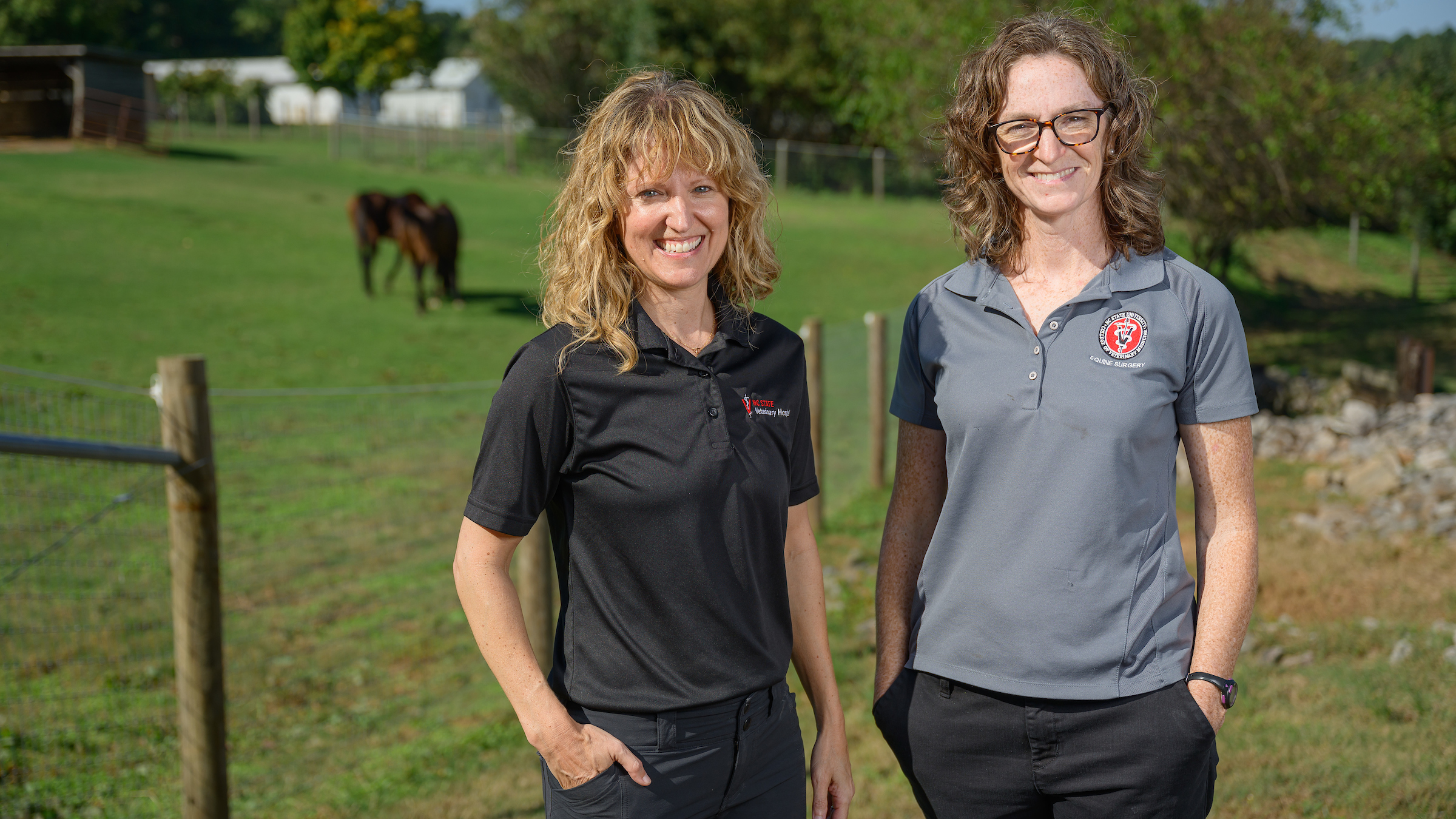Litwack Q&A With Dr. Javier Perez Quesada: Investigating Why Foals are Born with Neonatal Maladjustment Syndrome

In 2 to 5% of live equine births, the foals have trouble breathing, nursing and standing, and the ones who can get up often wander around aimlessly. About 20% of foals born with the condition, known as neonatal maladjustment syndrome, do not survive.
Suspicions about the syndrome’s causes are numerous, but no one has been able to pinpoint the culprit. Dr. Javier Perez Quesada, a resident in equine internal medicine at the NC State College of Veterinary Medicine, has been working on that.
At NC State, equine internal medicine residents must complete a research project with the help of a mentor, and Quesada chose Dr. Katarzyna Dembek, assistant professor of equine medicine, to help guide his work.
In a study of 34 foals, they compared biomarkers in blood samples from foals born with the syndrome, foals sick with other illnesses and healthy foals to see how the blood biomarkers of the foals with NMS might differ.
Quesada will discuss the study’s findings Wednesday at the College of Veterinary Medicine’s annual Litwack Research Forum. The forum is named in honor of Dr. Martin Litwack, a Raleigh veterinarian and an early advocate of the College of Veterinary Medicine.
Quesada presented his findings on NMS at the American College of Veterinary Internal Medicine conference this year and won an award in the equine category. He has been invited to present at the European College of Equine Internal Medicine gathering in Copenhagen this fall.
Quesada grew up in the Canary Islands and received his DVM in Spain. He started a residency in theriogenology, which led to his working in camel reproduction in Dubai, and an equine internship in Liverpool. He’s in his last year of residency at NC State and hopes next to complete a residency in equine ophthalmology.
We asked Quesada how he came to study NMS in foals and what his findings might mean.
Q: What made you decide to study Neonatal Maladjustment Syndrome?
QUESADA: I have a passion for working with foals, particularly in the fields of neonatology and endocrinology. I chose Dr. Dembek as my research mentor, and she proposed a project that piqued my interest. I have been conducting research, collecting samples and performing analysis with Dr. Dembek’s guidance. She also handles all the statistical analysis.
During my residency, I encountered numerous foals with neonatal maladjustment syndrome. While I initially aspired to be a pediatrician, my high level of empathy and emotional investment in horses made me realize that handling similar situations with human babies would be too challenging for me.
Initially, I didn’t prioritize research in my veterinary career, focusing on clinical work instead. However, I now understand the significance of advancing medicine through research. In the future, I hope to continue pursuing my research interests, whether in an educational or private practice setting.

Q: How would you summarize your research?
QUESADA: We are currently working on finding a way to diagnose or better understand the pathophysiology of neonatal maladjustment syndrome (NMS) in foals, as it causes neurological symptoms and a high number of deaths. This condition can lead to significant financial burdens for the owners, sometimes resulting in euthanasia or expensive, prolonged treatment for the foals. Currently, there is no clear understanding of how NMS occurs. Our objective is to identify the trigger that causes these symptoms. If left untreated, there is a high risk of developing sepsis, as the foals lack immunity from not having received colostrum — the first milk rich in antibodies produced by a postpartum mare — through nursing.
Neonatal maladjustment syndrome manifests in different degrees. Some foals may have difficulty nursing for a day and require additional supportive care, while others may be in critical condition, experiencing seizures and requiring intensive care, including various fluids, nutrition, anti-seizure medication and oxygen supplementation. In some cases, the foals begin to show signs of improvement over time, while in others they do not. The underlying cause of this variability is not well understood, leaving us with limited options beyond providing supportive care.
Q: What impact will your work have on your field? Have you made any discoveries?
QUESADA: In the small sample of foals we studied at NC State, we found biomarkers that could indicate evidence of astroglial damage or underdevelopment, which means that a part of the neurons might not be developing properly or might be malfunctioning. If the biomarker is not released from neurons or is not present in the normal concentration found in healthy foals, it could provide some guidance. Although we don’t fully understand the significance of this yet, it is a new discovery and could influence future research strategies.
In essence, the biological markers from a cell can tell us whether the cell is developed and functioning appropriately or not, as biomarkers can reveal damage. Biomarkers include proteins or enzymes that we can detect in the blood. Their presence can indicate that neurons or other cells are working. This approach could help us understand what is causing the syndrome.
In our study, we examined the plasma of healthy foals, sick foals without NMS and foals with NMS to detect concentration of three proteins. We discovered that the concentration of a protein called glial-fibrillary acidic protein (GFAP) was reduced in the sick foals and the foals with NMS compared to the healthy foals. We concluded that decreased GFAP concentration indicates astroglial (a type of brain cell) dysfunction or delayed astroglia development. We proposed that GFAP can be used as a predictive factor in critically ill foals.
Q: Does your work have any translational value for human medicine?
QUESADA: This research is very innovative in horses because nobody has measured the same biomarkers in foals that we see in babies with neonatal hypoxia or in neurological conditions such as Parkinson’s. Findings from our study have translational value for human medicine and other species
Q: What else is important to understand about your research?
QUESADA: Since this is the first time we have examined these biomarkers in horses, we need to evaluate a larger number of foals to expand the scope of this research. In human medicine, doctors can use data from 10,000 babies for these types of assessments, but in veterinary research, we usually have only about 100 foals in a study.


